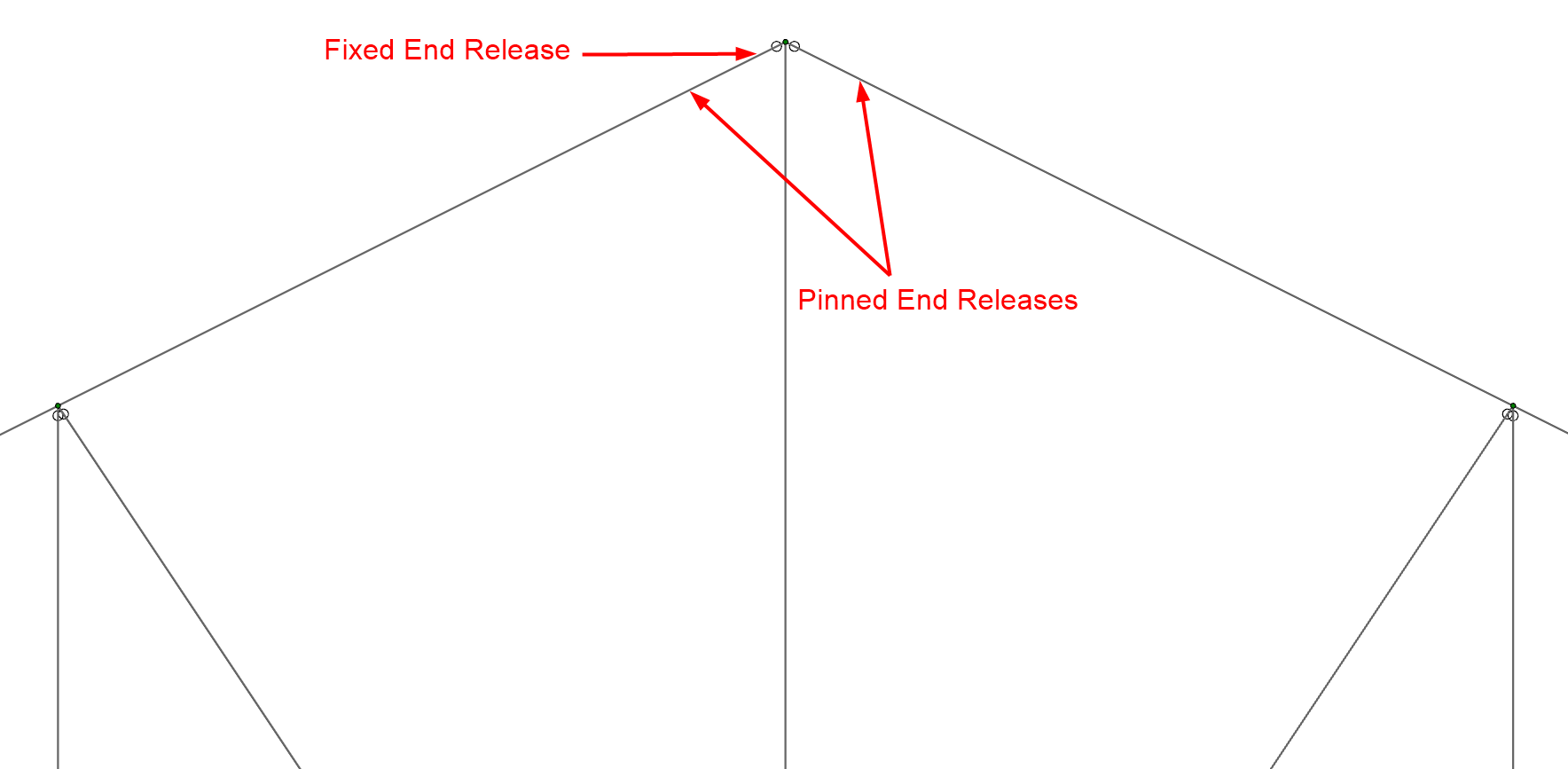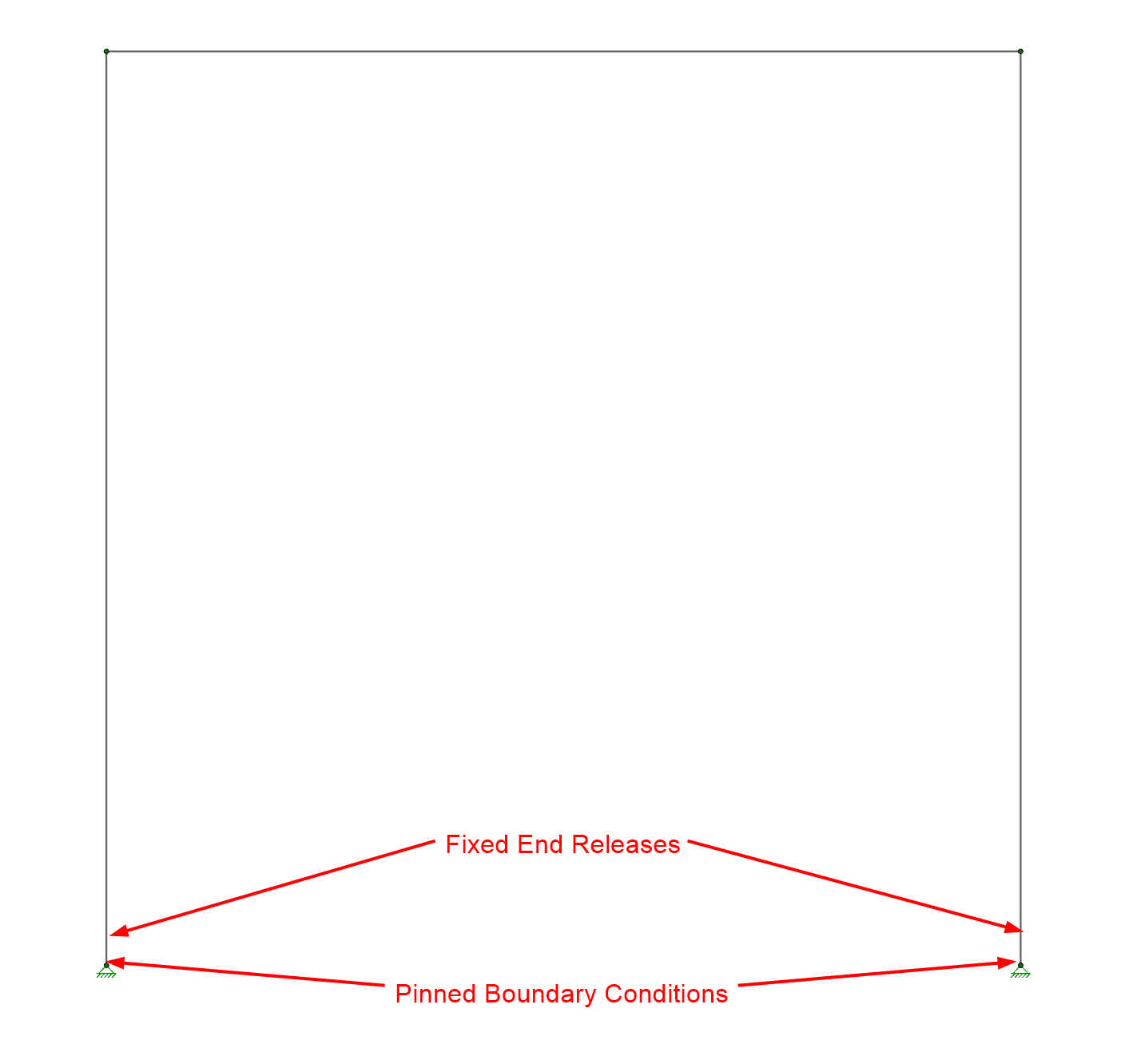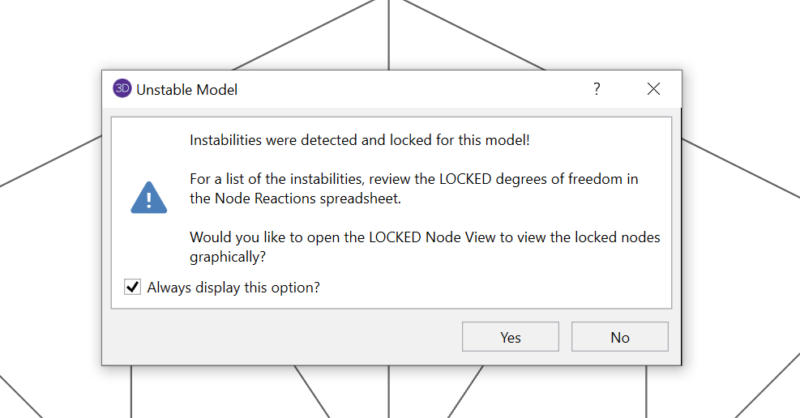Products
Learn
Support
Company
Have you ever received an instability warning when running a three dimensional RISA-3D model? This is because RISA-3D cannot build the stiffness matrix with the configuration you have modeled. In some cases, your model is truly unstable and in others it’s a matter of correctly modeling your structure for a 3D finite element analysis program. Below are a couple of tips to avoid instabilities in your RISA-3D models.
Link: Tips & Tricks: Truss Boundary Conditions
When only one connecting member end releases is modeled as fixed (all others are modeled as pinned), no moment can be transferred at this joint. However, it allows the program to assign rotational stiffness to this joint which decreases your chances of getting an instability warning.


